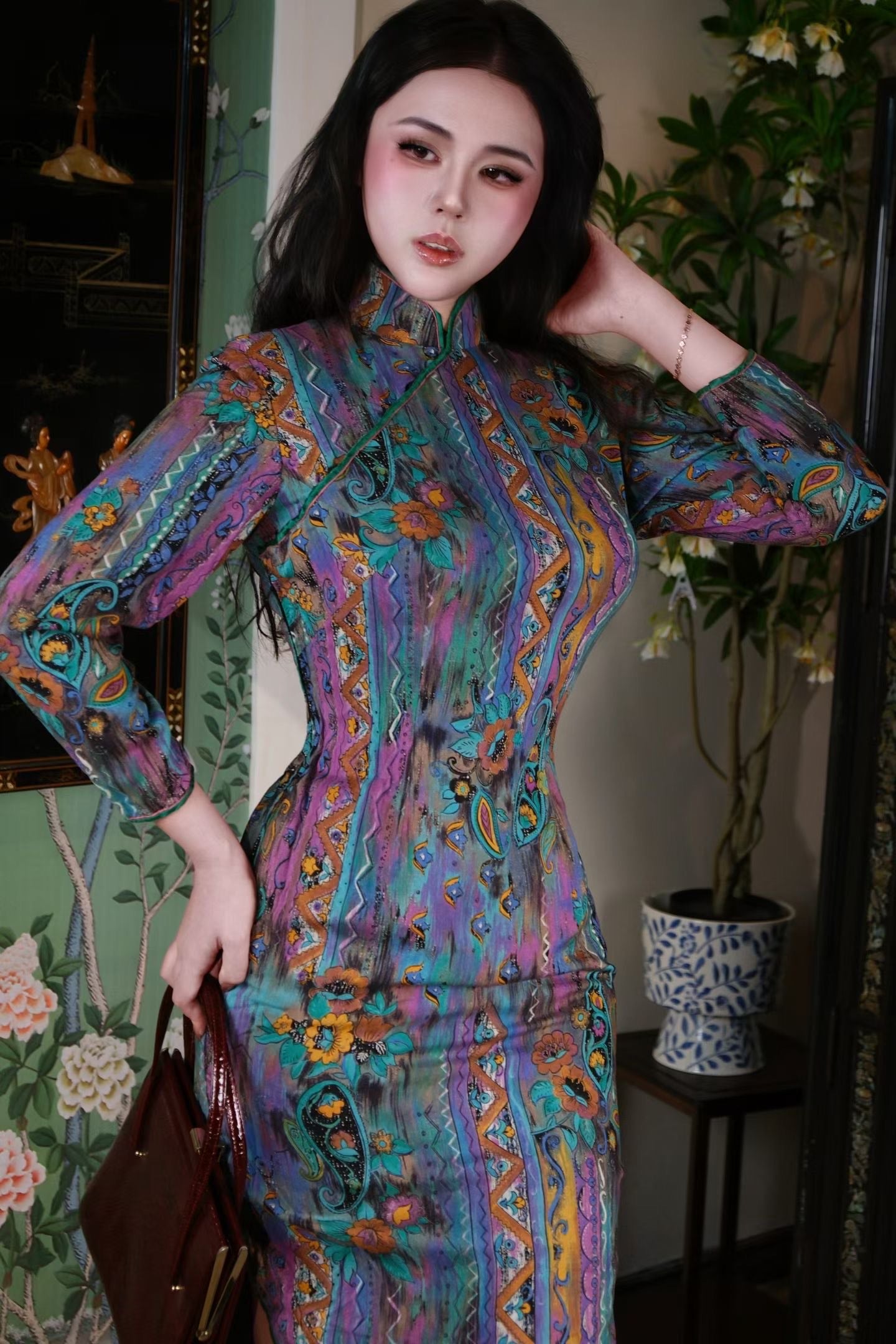深圳溯源
60年代 - 抽象手绘波谱几何佩斯利香港产古董旗袍 | 1960s - Abstract Hand-Painted Pop Art Geometric Paisley Antique Cheongsam from Hong Kong
60年代 - 抽象手绘波谱几何佩斯利香港产古董旗袍 | 1960s - Abstract Hand-Painted Pop Art Geometric Paisley Antique Cheongsam from Hong Kong
无法加载取货服务可用情况
分享一件极其罕见的上世纪六十年代抽象手绘波谱几何佩斯利香港产
孔雀蓝与紫罗兰的漩涡中,腰果纹(Paisley)
这一笔触,恰是香港旗袍在“黄金年代”尾声的惊鸿一瞥。
它的稀缺性,藏在“手绘”二字的肌理里。那个年代,
这件旗袍,是流动的后现代主义星图,是香港作为“文化转口港”
Sharing an extremely rare antique hand-painted abstract Pop Art geometric paisley Qipao/Cheongsam from 1960s Hong Kong.
In a swirling vortex of peacock blue and violet, the Paisley motif and the camellia flower engage in a cross-cultural dance—the former carrying the ancient imprint of the Zoroastrian fire altar from the Parthian Empire, and the latter, emerging from the delicate textures of traditional Chinese Gongbi painting, yet both blurring the boundaries of time and space under the abstract brushstrokes. This is a one-of-a-kind hand-painted Qipao from 1960s Hong Kong. On its canvas, geometric blocks of color, like a Mondrianesque fantasy, break free from the constraints of traditional patterns. The paisley motif is deconstructed into flowing curves of increasing entropy, while floral tendrils, charged with the unrestrained spirit of Oriental Xieyi (freehand style), boldly climb the optical illusion grids of Western Op Art.
This very brushwork captures a fleeting glimpse of the Hong Kong Qipao's "Golden Age" as it drew to a close. In the sixties, this port city became a melting pot of Eastern and Western popular culture—where the abstraction of Paris Fashion Week, the avant-garde patterns of London's "Swinging Youth," and the last threads of local silk mills' hand-painted silk converged. Designers used the Qipao's Mandarin collar, frog buttons, and fitted waist as an Oriental framework, infusing it with the color-blocking philosophy of Pop Art and the soul-stirring energy of Abstract Expressionism, transforming the garment into a wearable declaration of modern art.
Its rarity is embedded in the very texture of those two words: "hand-painted." In that era, industrial printing was sweeping the globe with its tide of standardization, yet high-end Hong Kong tailors insisted on letting the brush breathe on real silk—each subtle color blend is a trace of temperature, each blossoming flower an impromptu poem. Fewer than a hundred hand-painted Qipaos from the sixties survive today. Experimental pieces like this one, which perform an "entropic reorganization" of Indian motifs, Western abstraction, and traditional Chinese florals, remain as singular, isolated examples.
This Qipao is a flowing postmodernist star chart, a tangible specimen of Hong Kong as a "cultural entrepôt." It reveals that when the graceful silhouette of the traditional Qipao meets the wild fervor of abstract art, the philosophical principle of Oriental 'Liu Bai' (leaving blank space) and the visual impact of Western avant-garde thought achieve a reconciliation on a piece of silk—it is a portrait of the era that speaks more directly to the soul than any written text.
分享






